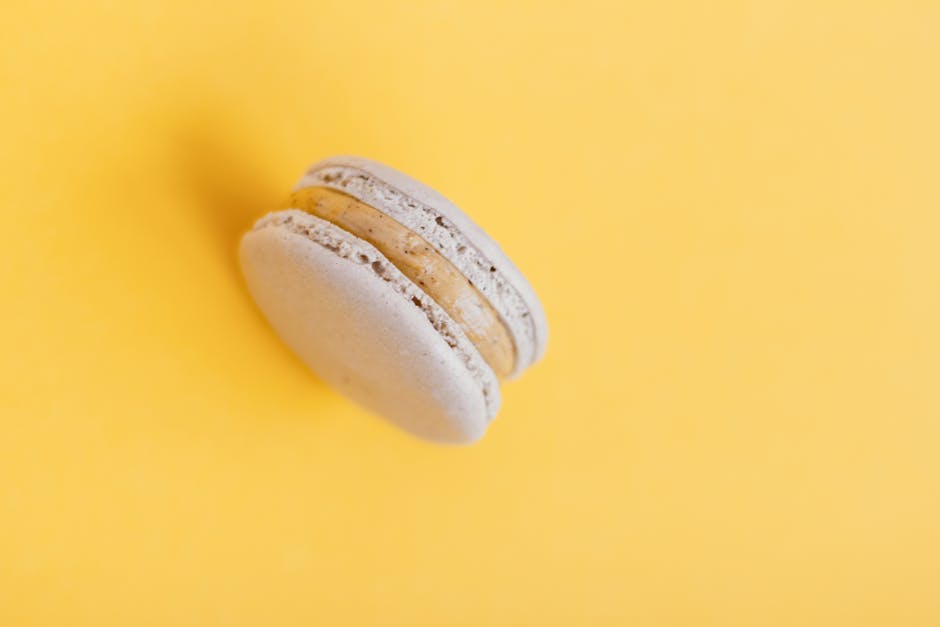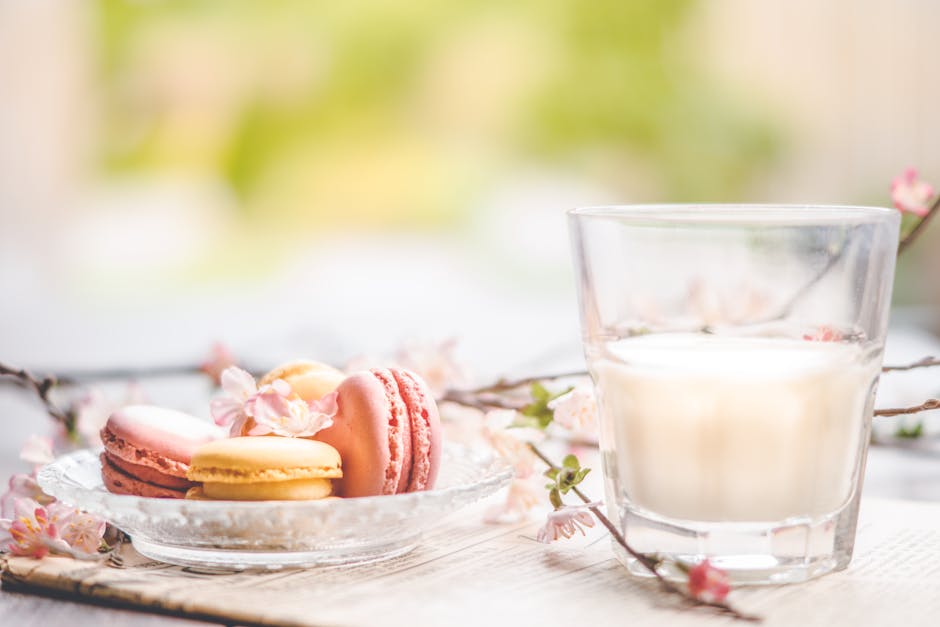Prepare to embark on a culinary journey to the sun-drenched fields of Provence, France, where the humble yet magnificent ratatouille finds its roots. This classic vegetable stew, far from being a simple side dish, holds a rich history and significant cultural weight. While its precise origins are debated, its popularity exploded in the 19th century, likely evolving from peasant dishes using readily available seasonal vegetables. The name itself, ratatouille, is believed to derive from the Occitan word ratatolha, meaning to mend or patch up, reflecting its adaptable nature incorporating whatever vegetables were on hand.
Ratatouille’s rise to international fame is largely attributed to its inclusion in Julia Child’s seminal cookbook, Mastering the Art of French Cooking, published in 1961. This propelled the dish from regional specialty to global culinary icon. Before Child’s influence, ratatouille was largely unknown outside of France, demonstrating the significant impact a single cookbook can have on food culture. Since then, countless variations have emerged, reflecting regional preferences and interpretations, yet the core principle remains: a harmonious blend of slowly simmered vegetables, showcasing the best of the season’s bounty.
Beyond its deliciousness, ratatouille boasts impressive health benefits. Packed with vitamins, minerals, and antioxidants, it’s a nutritional powerhouse. The abundance of tomatoes, peppers, zucchini, and eggplant contributes to a significant intake of lycopene, a powerful antioxidant linked to various health benefits. Studies have shown that regular consumption of lycopene-rich foods, like ratatouille, may reduce the risk of certain cancers and cardiovascular diseases. Furthermore, ratatouille’s relatively low calorie and fat content makes it a popular choice for health-conscious individuals, adding to its widespread appeal. The dish also reflects a sustainable approach to cooking, minimizing food waste by utilizing whole vegetables.
Today, ratatouille remains a cornerstone of French cuisine, celebrated for its simplicity, flavor, and versatility. It can be served as a side dish, a main course, or even as a filling for pastries. Its ability to be enjoyed both hot and cold further contributes to its popularity, making it a perfect dish for any occasion. From bustling Parisian bistros to humble Provençal kitchens, ratatouille continues to evoke a sense of warmth, tradition, and the enduring beauty of simple, flavorful cooking. Let’s delve into the recipe and uncover the secrets to this culinary masterpiece.
Ingredients and Measurements
This Classic French Ratatouille recipe relies on the freshest, highest-quality ingredients for the best flavor. Precise measurements are less critical than achieving a good balance of flavors and textures; however, the quantities below provide a reliable starting point. Feel free to adjust slightly to your preference, especially the herbs.
Vegetables:
- 2 large eggplants (about 1.5 lbs total): Choose firm eggplants with smooth, shiny skin. Avoid those that feel soft or have bruises. Cubing the eggplant consistently is crucial for even cooking. Aim for 1-inch cubes.
- 2 large zucchini (about 1 lb total): Similar to eggplants, select firm zucchini without blemishes. Halve them lengthwise, then slice into half-moons approximately 1/2-inch thick.
- 2 large yellow squash (about 1 lb total): Use the same selection criteria as for zucchini and cut into similar half-moons.
- 1 large red bell pepper (about 1 large): Choose a brightly colored, firm pepper. Remove the seeds and membranes before dicing into 1/2-inch pieces.
- 1 large onion (about 1 medium): A yellow or white onion works well. Finely chop it, about 1/2 cup chopped.
- 4-5 cloves garlic: Use fresh garlic for the best flavor. Mince it finely.
- 1 (28 ounce) can crushed tomatoes: Use high-quality canned tomatoes for the best results. Avoid using tomato paste, as its consistency can be too thick for this recipe.
Seasoning and Aromatics:
- 2 tablespoons olive oil: Use extra virgin olive oil for its superior flavor. Don’t be tempted to use less oil; it’s essential for proper browning and cooking.
- 1 teaspoon dried oregano: Or use 2 tablespoons of fresh oregano, chopped.
- 1 teaspoon dried basil: Or use 2 tablespoons of fresh basil, chopped.
- 1/2 teaspoon dried thyme: Or use 1 tablespoon of fresh thyme leaves.
- Salt and freshly ground black pepper: Season generously throughout the cooking process. Taste and adjust seasoning as needed; this is crucial for a flavorful ratatouille.
Optional additions: A pinch of red pepper flakes can add a touch of heat, while a tablespoon of tomato paste can deepen the color and flavor.
Mise en Place (Preparation of Ingredients)
Before you begin cooking your Classic French Ratatouille, meticulous mise en place is crucial for achieving the perfect result. This involves prepping all your ingredients ahead of time, ensuring a smooth and efficient cooking process. Proper preparation also helps to develop the complex flavors this dish is known for.
Begin with the vegetables. We’ll need: two medium zucchini (approximately 500g total), chopped into ½-inch dice; two medium yellow squash (approximately 400g total), also diced to ½-inch; one large red bell pepper (approximately 200g), seeded and diced to ½-inch; one large green bell pepper (approximately 200g), seeded and diced to ½-inch; one large onion (approximately 200g), finely chopped; four cloves garlic, minced; and two (14.5 ounce) cans of diced tomatoes, undrained. Consistency is key: uniformly sized vegetable pieces ensure even cooking and a beautiful final presentation.
Proper chopping techniques are essential. For the zucchini and yellow squash, avoid overly aggressive chopping that could lead to mushy texture during cooking. Aim for a clean, precise dice. The bell peppers should be similarly diced, ensuring all seeds and membranes are removed. A sharp knife will make this process considerably easier and safer. Finely chopping the onion will allow it to soften and caramelize thoroughly during the cooking process. Mince the garlic finely to release its full aroma and flavor without leaving large pieces in the final dish.
Next, address the herbs. Fresh herbs are highly recommended for their superior flavor. We’ll need 2 sprigs of fresh thyme, and 2 sprigs of fresh rosemary. Remove the leaves from the stems, roughly chop and set aside. Don’t discard the stems; they can be added to the pot during cooking to infuse the ratatouille with additional flavor and then removed before serving. Approximately 2 tablespoons of chopped fresh basil will be added at the very end to brighten the final flavor profile. For those without fresh herbs, 1 teaspoon of dried thyme, 1 teaspoon of dried rosemary, and 1 tablespoon of dried basil are acceptable substitutes, though the flavor will be slightly less intense.
Finally, prepare your seasoning. Have 2 teaspoons of sea salt, ½ teaspoon of freshly ground black pepper, and 2 tablespoons of olive oil readily available. Taste as you go, adjusting seasoning according to your preferences. Remember, the flavors will meld and deepen during the long, slow cooking process.
With all ingredients prepped and measured, you’re ready to begin cooking your Classic French Ratatouille! This thorough mise en place will guarantee a successful and enjoyable cooking experience.
Sautéing the Aromatics
This crucial step lays the foundation for the rich flavor of your ratatouille. We’ll be sweating down the aromatics—onions, garlic, and bell peppers—to coax out their sweetness and create a fragrant base for the vegetables. Proper sautéing prevents burning and ensures a harmonious blend of flavors.
Begin by finely dicing one large yellow onion (approximately 1 cup diced). Similarly, dice two cloves of garlic as finely as possible. Using a sharp knife will make this process much easier and result in a more even cook. If you have a mandoline slicer, this is a great time to use it for perfectly uniform pieces.
Next, prepare your bell peppers. Use one large red bell pepper and one large green bell pepper. Remove the stems, seeds, and membranes, then dice them into roughly ½-inch pieces. Aim for consistent sizing to ensure even cooking; unevenly sized pieces will cook at different rates.
Heat 2 tablespoons of extra virgin olive oil in a large, heavy-bottomed pot or Dutch oven over medium heat. A heavy-bottomed pot distributes heat evenly, preventing hot spots that can burn the vegetables. Once the oil shimmers, add the diced onions and cook, stirring occasionally, for about 5-7 minutes, until softened and translucent. Don’t rush this process; low and slow is key.
Add the minced garlic to the pot and cook for another minute, stirring constantly, until fragrant. Be careful not to burn the garlic, as it will become bitter. If the garlic starts to brown too quickly, reduce the heat slightly.
Now, add the diced bell peppers to the pot. Stir to combine with the onions and garlic. Continue to cook for another 8-10 minutes, stirring occasionally, until the peppers have softened slightly and begun to release their juices. The goal here is to sweat the vegetables, not brown them. They should be tender but still hold their shape.
Once the aromatics are cooked, you’ll have a fragrant and flavorful base ready to receive the remaining vegetables. Taste the mixture and adjust seasoning if needed, perhaps adding a pinch of salt and freshly ground black pepper. This step sets the stage for the wonderful flavors to come in your classic French ratatouille.
Roasting the Vegetables
Roasting the vegetables is crucial to achieving the deep, rich flavor that defines a classic French ratatouille. This step concentrates their natural sweetness and creates a beautiful caramelization that elevates the dish beyond a simple stew. We’ll be roasting approximately 2 pounds of vegetables in total.
Begin by prepping your vegetables. We need: one large eggplant (about 1 pound), two medium zucchini (about 1/2 pound total), two bell peppers (one red, one yellow, about 1/2 pound total), and one large onion (about 1/2 pound). Thoroughly wash all vegetables before proceeding. Cut the eggplant into 1-inch cubes and place them in a colander. Sprinkle generously with salt (about 1 tablespoon) and let them sit for at least 30 minutes. This crucial step draws out excess moisture, preventing a soggy ratatouille. After 30 minutes, rinse the eggplant under cold water and pat completely dry with paper towels.
While the eggplant is draining, chop the zucchini into 1-inch pieces, the bell peppers into 1-inch chunks, and the onion into roughly 1/2-inch pieces. Ensure consistent sizing of your vegetables for even roasting. Smaller pieces will cook faster than larger ones, resulting in uneven texture.
Preheat your oven to 400°F (200°C). In a large bowl, toss the prepared eggplant, zucchini, bell peppers, and onion with 4 tablespoons of olive oil. Season generously with freshly ground black pepper (about 1 teaspoon) and a sprinkle of dried herbes de Provence (about 1 teaspoon). Don’t be shy with the olive oil; it helps achieve that beautiful caramelization and ensures the vegetables roast evenly without sticking.
Spread the vegetables in a single layer on two large baking sheets. Avoid overcrowding the pans, as this will steam the vegetables instead of roasting them. If necessary, use two baking sheets to ensure a single layer. Roast for 30-40 minutes, or until the vegetables are tender and slightly caramelized, stirring halfway through to ensure even cooking. You should see lovely brown edges on many of the pieces. Keep a close eye on the vegetables during the last 10 minutes of roasting to prevent burning.
Once roasted, remove the baking sheets from the oven and allow the vegetables to cool slightly before proceeding with the next steps of the ratatouille recipe. The roasted vegetables will retain their flavor and color better if they are allowed to cool down a bit, rather than being immediately added to the sauce.
Simmering the Ratatouille
Once all your vegetables are beautifully prepped and ready, it’s time for the magic to happen! This simmering stage is crucial for developing the rich, complex flavors that define a truly exceptional ratatouille. We’ll be using a large, heavy-bottomed pot or Dutch oven – this ensures even heating and prevents sticking.
Begin by adding 2 tablespoons of olive oil to your pot over medium heat. Once shimmering, add the onions and garlic. Cook, stirring occasionally, until softened and translucent, about 5-7 minutes. Don’t rush this step; properly softened onions and garlic are foundational to the ratatouille’s flavor profile.
Next, add the eggplant and zucchini. Stir to coat them in the olive oil and cook for another 5-7 minutes, allowing them to slightly soften. Avoid overcrowding the pot; if necessary, work in batches to ensure even cooking. Overcrowding will lead to steaming rather than sautéing, resulting in a less flavorful dish.
Now it’s time to introduce the bell peppers. Add them to the pot along with 1 teaspoon of dried oregano, ½ teaspoon of dried thyme, and a generous pinch of salt and freshly ground black pepper. Stir well to combine and cook for another 3-4 minutes. The herbs will begin to release their aromatic oils at this stage, further enhancing the flavor complexity.
Finally, pour in 1 (28-ounce) can of crushed tomatoes, 1 cup of vegetable broth, and 1 tablespoon of tomato paste. Stir everything together thoroughly, ensuring all the vegetables are submerged in the liquid. Bring the mixture to a gentle simmer, then reduce the heat to low, cover the pot, and let it simmer for at least 30 minutes, or up to 1 hour. The longer it simmers, the richer and more flavorful your ratatouille will become.
During the simmering process, check the ratatouille occasionally and stir gently to prevent sticking. Taste and adjust seasoning as needed. You may wish to add more salt, pepper, or herbs to your liking. Remember, a good ratatouille should be well-seasoned but not overly salty.
Once the ratatouille has reached your desired consistency – a lovely, tender blend of vegetables in a rich sauce – remove it from the heat and let it cool slightly before serving. Enjoy your homemade ratatouille – a testament to the beauty of simple, well-executed cooking!
Cooling and Serving
Once your Classic French Ratatouille has finished simmering, the crucial next step is proper cooling. This not only enhances the flavor but also ensures food safety. Allow the ratatouille to cool completely in the pot before transferring it to storage containers. This prevents condensation from forming and potentially diluting the flavors or leading to bacterial growth.
To facilitate cooling, you can gently stir the ratatouille every 15-20 minutes during the first hour. This helps distribute the heat evenly and speeds up the cooling process. Avoid covering the pot completely while it cools initially; a loosely placed lid or a few layers of parchment paper will suffice. This allows steam to escape, preventing the ratatouille from becoming soggy or developing an unpleasant film on the surface.
Once the ratatouille has cooled to room temperature (approximately 1-2 hours depending on the amount and ambient temperature), you can transfer it to airtight containers. I recommend using glass containers for optimal storage. Fill the containers completely to minimize air exposure, which can affect the quality and freshness of the ratatouille. Label the containers with the date to ensure you use it within its optimal timeframe.
Proper storage is key to maintaining the ratatouille’s quality. Store the cooled ratatouille in the refrigerator for up to 5 days. After 5 days, while it might still be safe to consume, the flavor and texture can begin to degrade. For longer storage, freezing is an excellent option. Allow the ratatouille to cool completely before freezing in airtight containers or freezer bags, leaving about an inch of headspace for expansion.
When ready to serve, you have several options. You can enjoy the ratatouille cold directly from the refrigerator, offering a refreshing summer side dish. Alternatively, you can gently reheat it on the stovetop over low heat, adding a splash of water or broth if needed to prevent sticking. Avoid over-heating, as this can ruin the delicate texture of the vegetables. You can also serve the ratatouille warm or at room temperature as a component in other dishes, such as a pasta sauce or a topping for grilled meats or fish.
Serving suggestions: Garnish with fresh basil or parsley for an added burst of freshness. A drizzle of good quality olive oil just before serving adds richness and depth of flavor. Serve alongside crusty bread, grilled meats, polenta, or couscous to create a complete and satisfying meal.
Recommendations for Classic French Ratatouille
This Classic French Ratatouille recipe is best served warm, allowing the flavors to fully meld and deepen. Consider serving it as a hearty side dish alongside grilled meats, such as lamb chops or chicken, or as a vegetarian main course with crusty bread for dipping. Its rich, savory sauce is also excellent spooned over polenta or creamy risotto. For a truly authentic experience, finish with a sprinkle of fresh basil or parsley before serving.
Leftover ratatouille can be stored in an airtight container in the refrigerator for up to 3-4 days. Its flavors actually intensify slightly upon sitting, making it even more delicious the next day. You can also freeze ratatouille for up to 3 months. Allow it to cool completely before freezing to prevent ice crystal formation. When reheating from frozen, thaw overnight in the refrigerator and then gently heat on the stovetop or in the microwave.
This recipe pairs beautifully with a variety of dishes. Consider serving it with roasted vegetables, such as zucchini or eggplant, to complement its earthy flavors. A simple green salad with a light vinaigrette adds a refreshing contrast to the richness of the ratatouille. For a more substantial meal, serve it with grilled fish, such as cod or sea bass, or alongside hearty pasta dishes. The possibilities are endless!
Approximate Nutritional Information (per serving, based on a 6-serving recipe): Calories: Approximately 150-200 (depending on oil used), Fat: 10-15g, Protein: 4-6g, Carbohydrates: 15-20g, Fiber: 4-6g. Please note that this is an estimate and may vary depending on specific ingredients and portion sizes. For precise nutritional information, use a nutrition calculator with your exact ingredients and measurements.
Important Note: While this recipe is relatively low in calories and fat, the nutritional content can be significantly affected by the amount of olive oil used. To reduce the fat content, consider using a cooking spray or reducing the amount of oil specified in the recipe. However, keep in mind that olive oil contributes significantly to the flavor and texture of the ratatouille.





